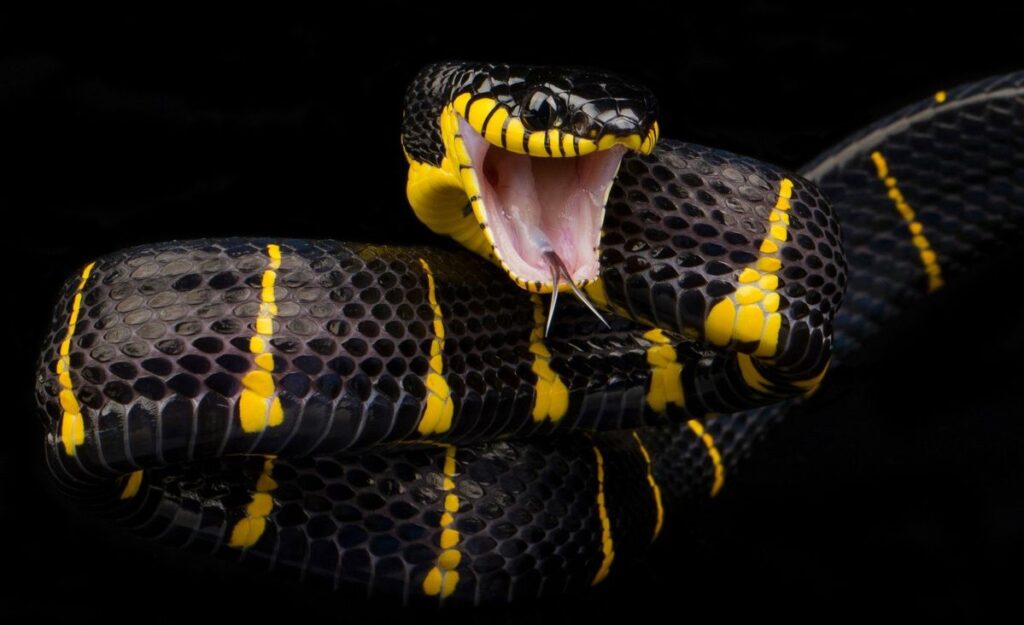
most venomous snake in the world
TOP 10 MOST VENOMOUS SNAKES
The varieties of snakes that most often cause serious snakebites depend on the region of the world. In Africa, the most dangerous species include black mambas, puff adders, and carpet vipers. In the Middle East the species of greatest concern are carpet vipers and elapids; in Central and South America, Bothrops and rattlesnakes are of greatest concern. In South Asia, it has historically been believed that Indian cobras, common kraits, Russell’s viper and carpet vipers were the most dangerous species; however other snakes may also cause significant problems in this area of the world.
While several species of snakes may cause more bodily destruction than others, any of these venomous snakes are still very capable of causing human fatalities should a bite go untreated, regardless of their venom capabilities or behavioral tendencies.
Mortality (often determined by measured toxicity on mice) is a commonly used indicator to determine the danger of any given venomous snake, but important too are its efficiency of venom delivery, its venom yield and its behavior when it encounters humans. Many snake experts have cited the black mamba and the coastal taipan as the world’s most dangerous, albeit not the most venomous snakes. Both species are elapids, and in several aspects of morphology, ecology and behavior, the coastal taipan is strongly convergent with the black mamba.
So it is very hard to makeout a correct order of most venomous snakes but here is the list of 10 most venomous snakes in the world which is accepted by majority of nature expert, activist, conservationist and various publications.
1. Inland Taipan (Oxyuranus microlepidotus)
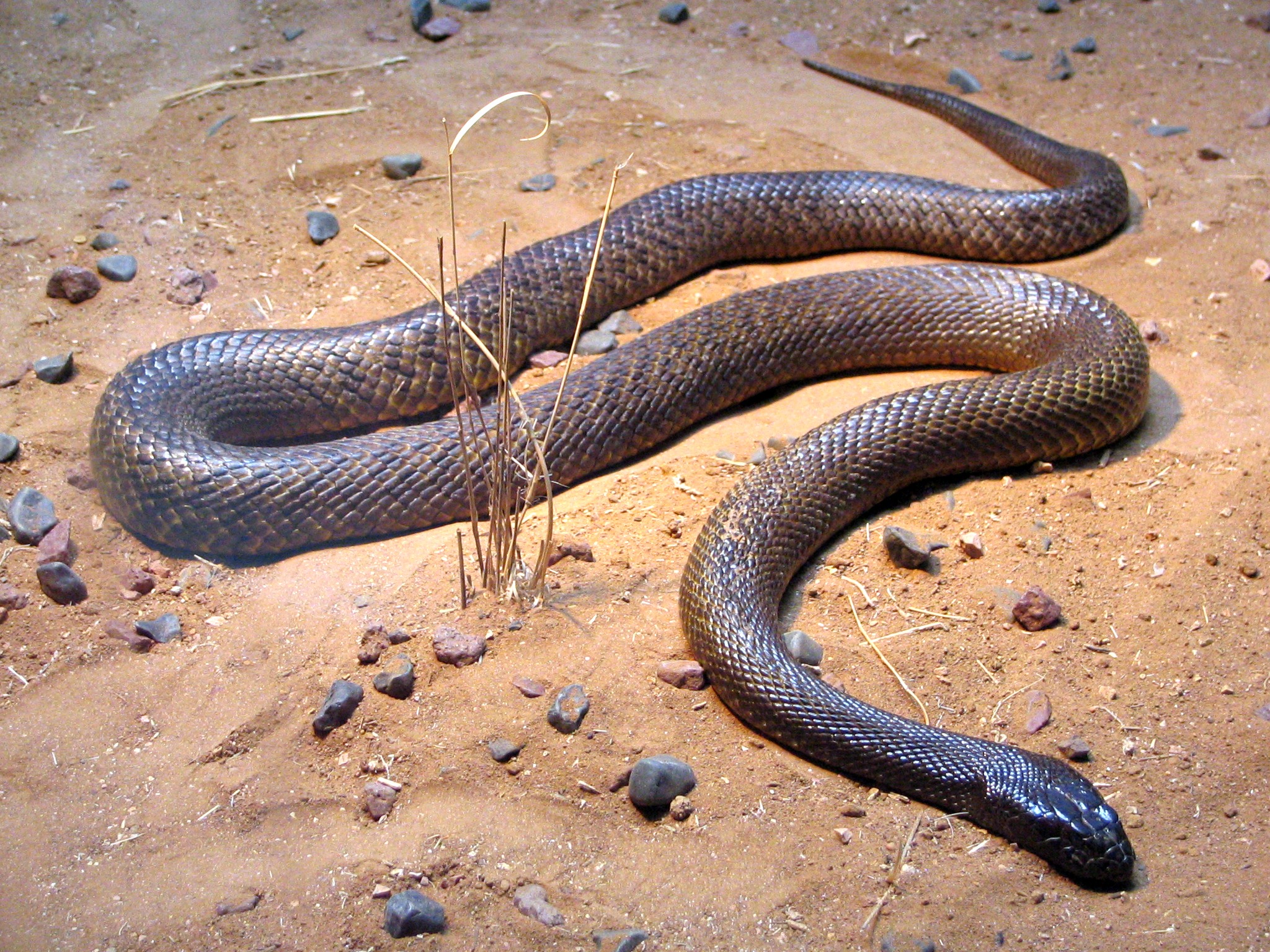
The Inland Taipan, also known as the “fierce snake” or “small-scaled snake,” is considered the most venomous snake in the world. Native to Australia, its venom is a neurotoxin that can kill a human in less than an hour.
One bite contains enough venom to kill up to 100 adult humans or 250,000 mice. Despite its lethality, the Inland Taipan is reclusive and rarely encounters humans, resulting in very few recorded bites. It primarily preys on small mammals like rats, injecting its highly potent venom quickly and efficiently to immobilize them.
2. Eastern Brown Snake (Pseudonaja textilis)

The Eastern Brown Snake is another highly venomous species found in Australia. Its venom is neurotoxic and contains blood coagulants, making it extremely deadly. It is responsible for more snakebite fatalities in Australia than any other species, primarily due to its aggressive nature when threatened and its proximity to populated areas.
Despite its name, the Eastern Brown Snake can vary in color from pale brown to dark shades. It’s fast-moving and highly alert, and it preys on small mammals, birds, and reptiles. Antivenom is available, but immediate treatment is crucial after a bite.
3. Coastal Taipan (Oxyuranus scutellatus)

The Coastal Taipan, native to Australia and New Guinea, is highly venomous and can grow up to 10 feet long. Its venom is a potent neurotoxin that can paralyze the victim’s nervous system, leading to respiratory failure.
The Coastal Taipan is highly agile, capable of delivering quick strikes with precision. Although aggressive when provoked, it typically avoids human contact. Before the development of antivenom, a bite from this snake was almost always fatal. Today, prompt medical treatment can save lives, but its venom remains one of the deadliest in the world.
4. Black Mamba (Dendroaspis polylepis)

Native to sub-Saharan Africa, the Black Mamba is notorious for its speed and aggression. It is one of the fastest snakes in the world, capable of moving at speeds of up to 12 mph. Its venom is a mix of neurotoxins that can cause paralysis, respiratory failure, and death within hours if untreated. Despite its name, the Black Mamba is not black but rather olive or gray in color, with a black interior mouth. Known for its territorial behavior, it will attack when threatened. Antivenom is available, but immediate medical attention is critical for survival.
5. Blue Krait (Bungarus caeruleus)
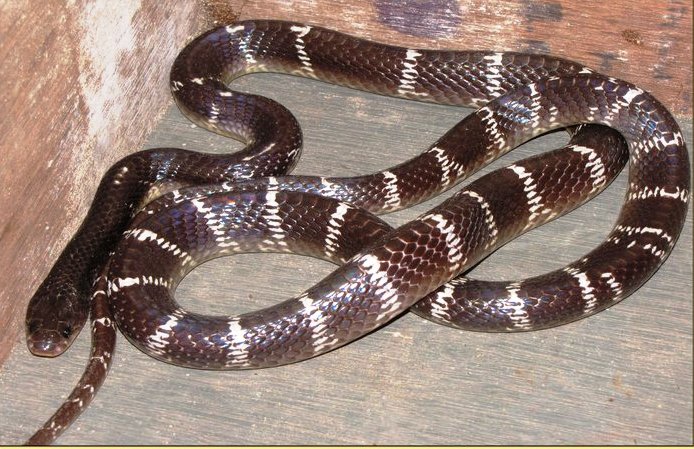
The Blue Krait, also known as the Indian Krait, is one of the most venomous snakes in the world, native to the Indian subcontinent. Its venom is highly neurotoxic, causing paralysis by blocking the communication between nerves and muscles. Death from a bite can occur within 6 to 12 hours if left untreated. Kraits are nocturnal and tend to avoid human contact, but they become more aggressive at night. While bites are rare, they are often fatal without antivenom. Kraits are also known for their distinctive black and white banding patterns.
6. Belcher’s Sea Snake (Hydrophis belcheri)
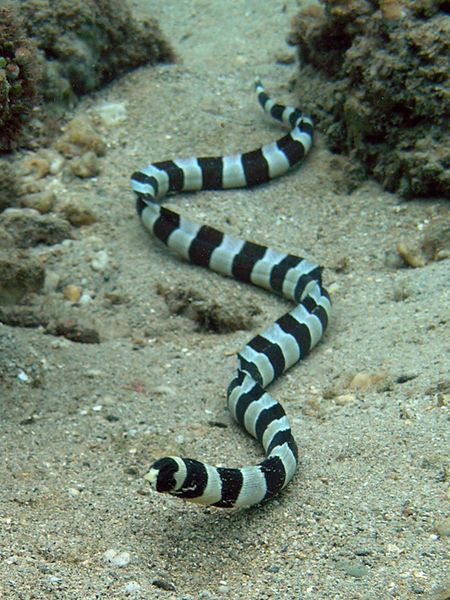
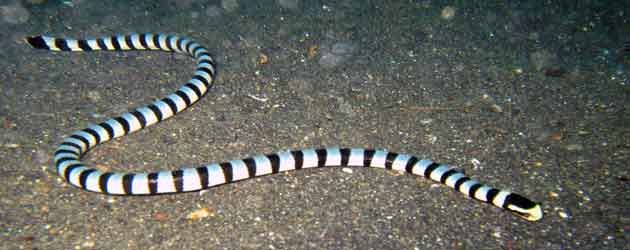
Belcher’s Sea Snake is considered the most venomous sea snake in the world.Found in the Indian Ocean and coastal waters of Southeast Asia, its venom is highly toxic, containing neurotoxins that can cause respiratory failure. Despite its lethality, this snake is not aggressive and is rarely known to bite humans. Most bites occur in fishermen accidentally handling them in nets. Only a small amount of venom is injected during a bite, but even that is potent enough to be fatal if untreated. Its mild temperament means it poses little threat to humans.
7. King Cobra (Ophiophagus hannah)
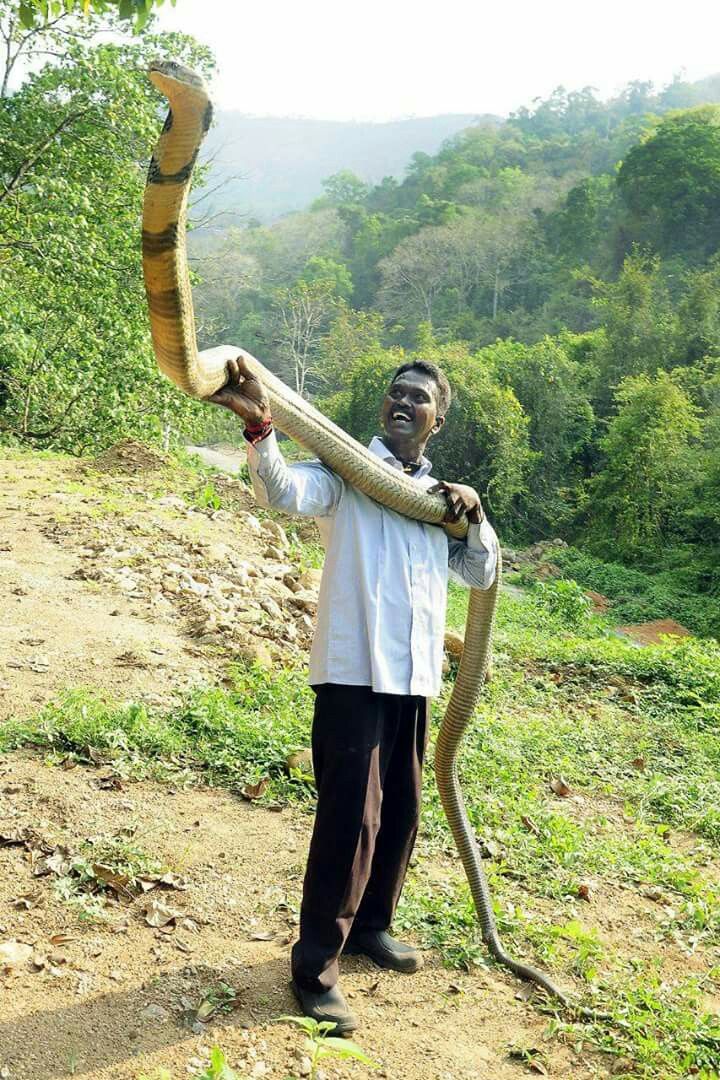
The King Cobra, the longest venomous snake in the world, can grow up to 18 feet. Found primarily in Southeast Asia and India, it has a neurotoxic venom that attacks the central nervous system, causing paralysis and death within hours if untreated.
The King Cobra is unique in that it primarily preys on other snakes, and it is known for its ability to stand upright and spread its hood when threatened.
Despite its fearsome reputation, the King Cobra avoids human contact whenever possible. However, when cornered, it can be highly aggressive and dangerous.
8. Tiger Snake (Notechis scutatus)
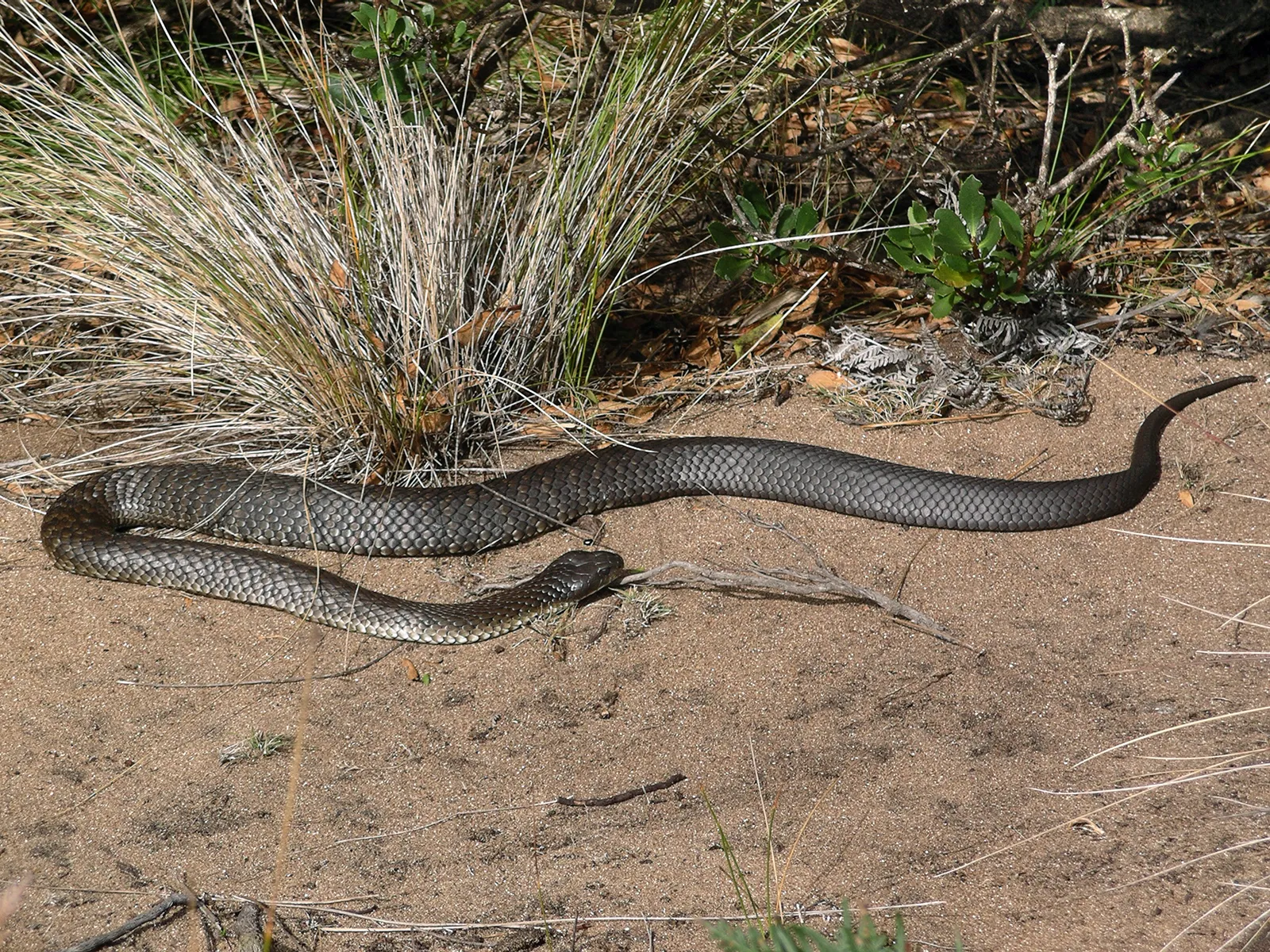
The Tiger Snake, native to southern Australia, is named for the distinctive banding on its body, though this can vary in color. Its venom contains neurotoxins, coagulants, and myotoxins, making it extremely dangerous. A bite can result in paralysis, bleeding, and muscle damage, leading to death if untreated.
Tiger Snakes are highly adaptive and can be found in various habitats, including coastal regions, wetlands, and even suburban areas. While not naturally aggressive, they will defend themselves vigorously if threatened. Quick medical intervention with antivenom is essential to survive a Tiger Snake bite.
9. Russell’s Viper (Daboia russelii)
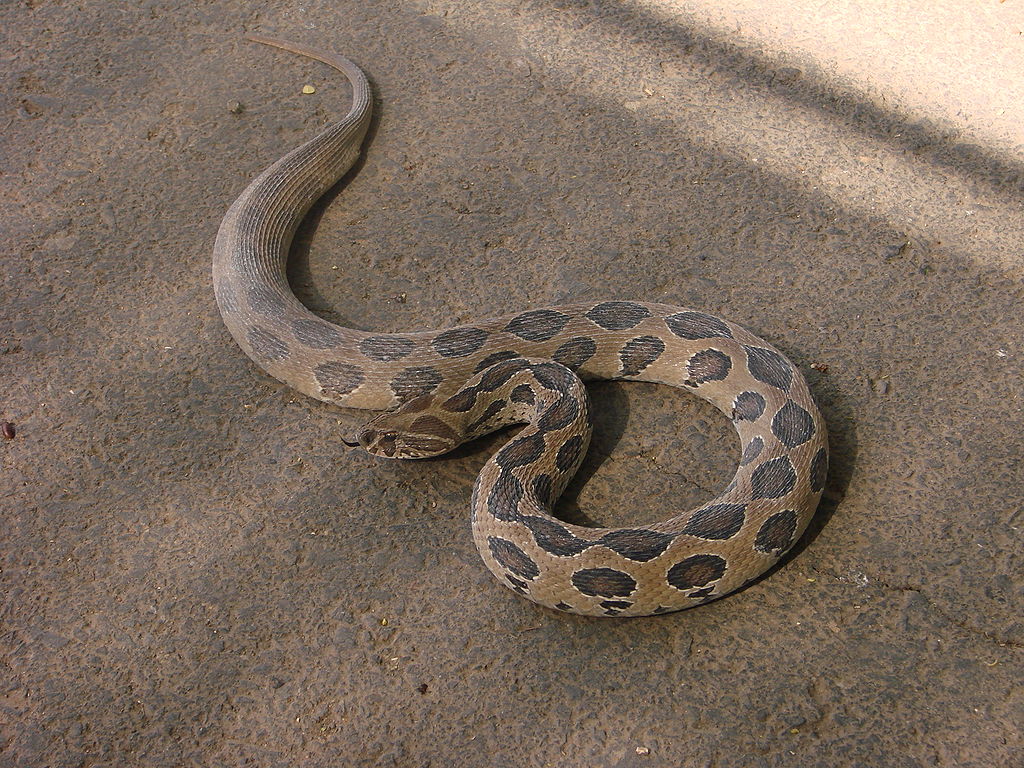
Russell’s Viper is a highly venomous snake found across Asia, particularly in India, Sri Lanka, and Southeast Asia. Its venom is a mix of neurotoxins and hemotoxins, causing severe pain, tissue damage, and bleeding disorders.
It is responsible for thousands of snakebite deaths annually due to its aggressive nature and tendency to inhabit areas near human settlements. Russell’s Viper is known for its distinctive pattern of circular spots and hissing sounds when threatened. Bites require immediate medical attention, as the venom can lead to kidney failure and blood clotting issues, often resulting in death.
10.
(Naja philippinensis)
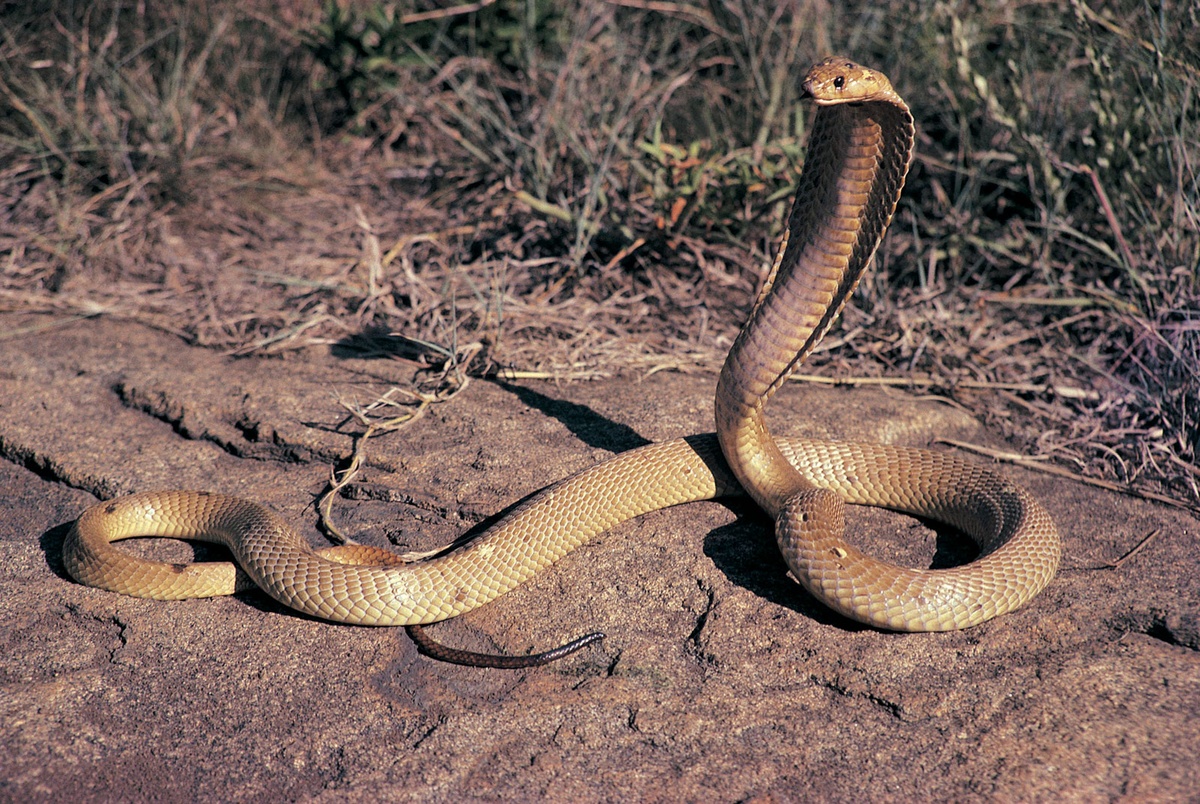
The Philippine Cobra is one of the deadliest cobras in the world, primarily due to its potent neurotoxic venom. Native to the Philippines, this snake can spit its venom accurately over a distance of up to 3 meters (10 feet), aiming for the eyes to cause blindness.
Its venom can cause respiratory failure within 30 minutes if untreated. Unlike many cobras, the Philippine Cobra is highly aggressive and territorial, making it a significant threat to humans. Despite this, fatalities are relatively low due to the availability of antivenom and medical intervention.



